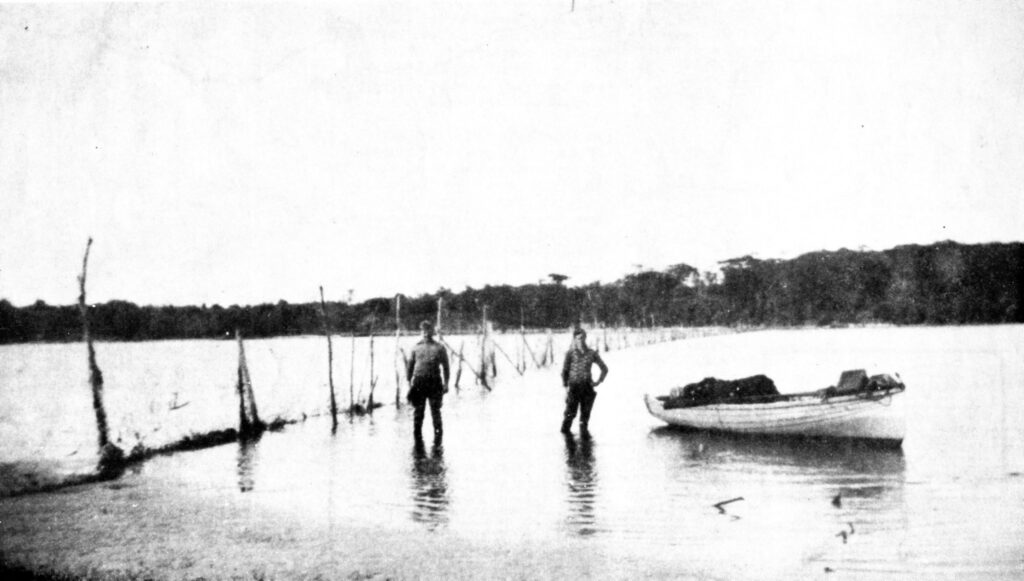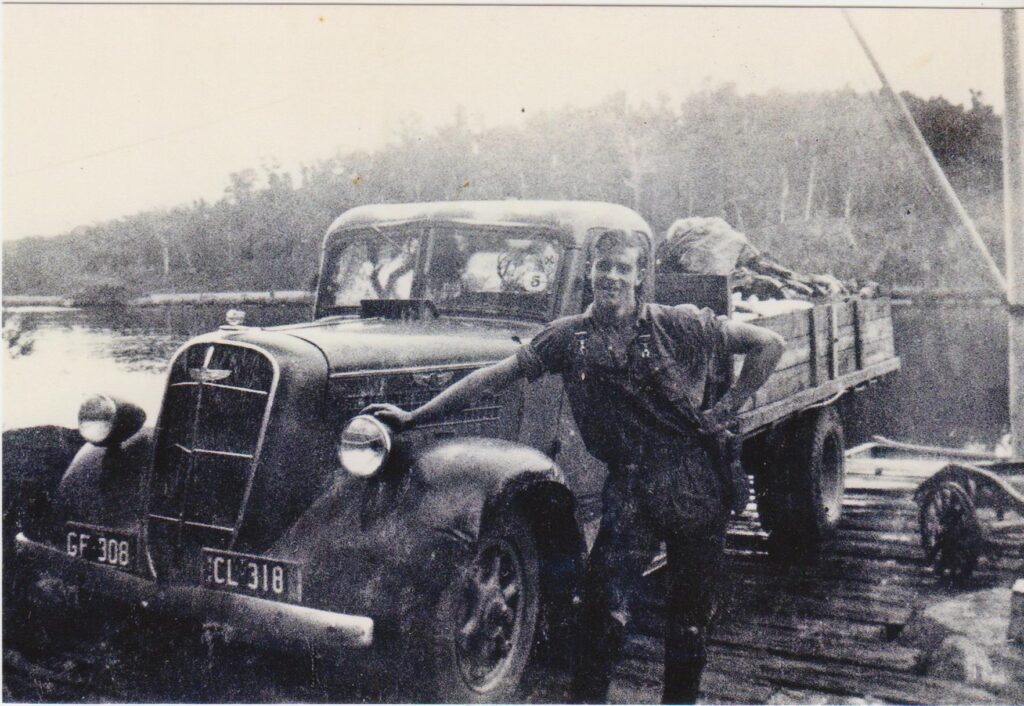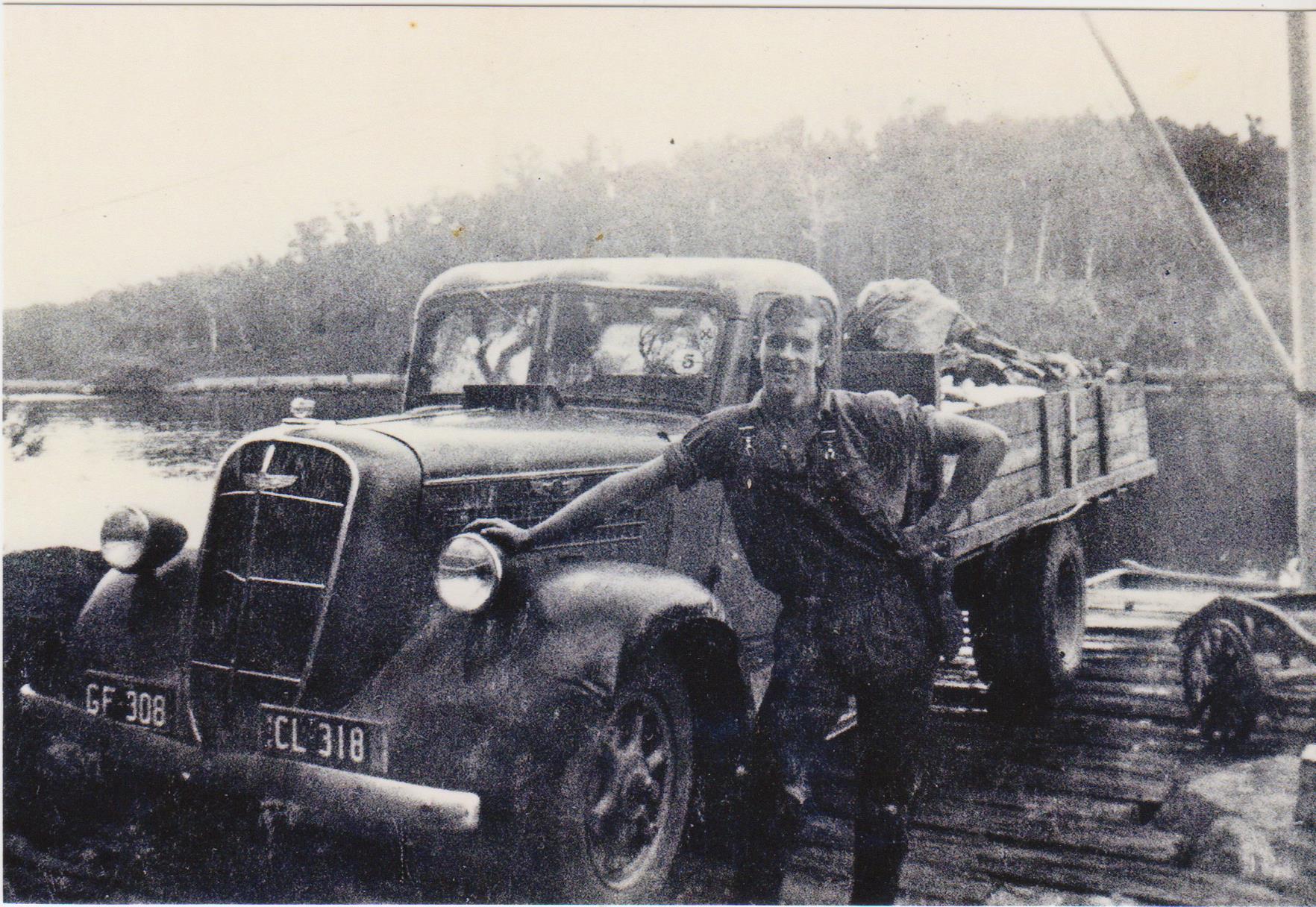Lichen now covers the granite rocks at the Fishermans Landing at Wingan Inlet, Croajingolong National Park. The surrounding vegetation has regrown and there is little to indicate the role that this site played in the Second World War.
Following the commencement of war it was a priority of the Federal Government to secure sources of protein for troop rations for the Australian forces and canneries at Narooma and Eden were contracted to produce canned fish, mainly tuna and salmon.
In 1941 there were reports of a massive shoal of Australian Salmon (Arripis trutta) in Wingan Inlet. The general manager of the Narooma Fish Canning Pty Ltd reported that “40 acres of salmon, equal to between 5,000,000 and 6,000,000 cans are waiting to be caught”.
Netting the fish was going to be a major undertaking, involving the construction of vehicle access to the remote estuary. While the cannery at Eden was preparing to receive the fish, heavy rains washed the salmon out to sea before any road building or fishing operations could commence.
The following winter Wingan Inlet was again full of salmon.
A number of Eden fishermen, including Norm Joiner and his father Ned, saw the opportunity to supply fish to the Eden cannery. The Joiners were experienced in fishing salmon in the local waters around Eden and Womboyn Lake.
On 22 July 1942 the fishermen constructed a wire netting fence across the lower part of Wingan Inlet, penning an estimated 100,000 boxes of salmon, each box potentially holding 70 lbs (32 kg).

Jack Symonds (L) and Norm Joiner (R) repairing the salmon wire netting fence at Wingan Inlet 1942
To transport the catch, vehicle access from the Princes Highway to the inlet was urgently needed.
Ned Joiner, with the assistance of a local cattleman, identified and blazed the shortest and most trafficable route from the Wingan River bridge on the highway to the deepest water suitable for a landing on the eastern side of the inlet, a distance of about 25 kilometres.
Ned and his team set to work clearing a track and constructing several culverts, corduroy crossings and a significant bridge across the Hard To Seek Creek, all without the assistance of government funding and completed in three weeks.
At the Fishermans Landing the Joiners built a small wharf using local split timbers and erected a crane powered through the rear differential of a Willys Overland. They were an innovative family who could readily adapt to working is these remote conditions.

Norm Joiner and 5 ton truck on the Fishermans Landing, Wingan Inlet 1942
Norm Joiner commenced netting, delivering the salmon by barge to the Fishermans Landing and loading and transporting the boxes to Eden on a 5 ton truck. On 6 September 1942 the first two loads of salmon were carted to the cannery for which the fishermen received two shillings and sixpence per box.
Over the following weeks about 4,000 boxes of fish were netted and transported.
With the success of the operation and interest in the fishery by Victorian fishermen, funding was provided to construct alternative access to the western side of the inlet, allowing quicker access to the Melbourne market. It is likely that the current West Wingan Road largely follows this alignment.
Wet conditions on the eastern road resulted in the relocation of the Joiner operation to western side in early November 1942. Unfortunately the new road was also problematic in wet conditions, sometimes resulting in trucks needing to be pulled by a tractor.
On 21 November it started to rain and by 24 November 14 inches (350 mm) had fallen, causing the inlet to flood. Fence and salmon were washed out to sea and the fishery ceased. In total, 8,000 boxes of salmon were netted and transported for canning.
Norm Joiner returned to fishing and carting timber around Eden, raising a family and contributing to the local community. Passionate about the fishing industry, Norm wrote in 1979 of the decline of the salmon numbers due to larger boats and the use of spotter planes, advocating a closed salmon season for south east Australia.
Wingan Inlet today remains a remarkable, natural place, one of the few undeveloped estuaries in south eastern Australia and a favourite spot for people seeking a remote and quiet destination.
Acknowledgements: Thank you to Fay Switzer (daughter of Norm Joiner) and the Joiner family for use of photos and documents and the Eden Killer Whale Museum for copies of various articles. Background information was also gained from a 1943 letter to the Eden Magnet and Pambula Voice by Jonas Crabtree, recopied by Joanne Korner in 2016.

Leave a Reply